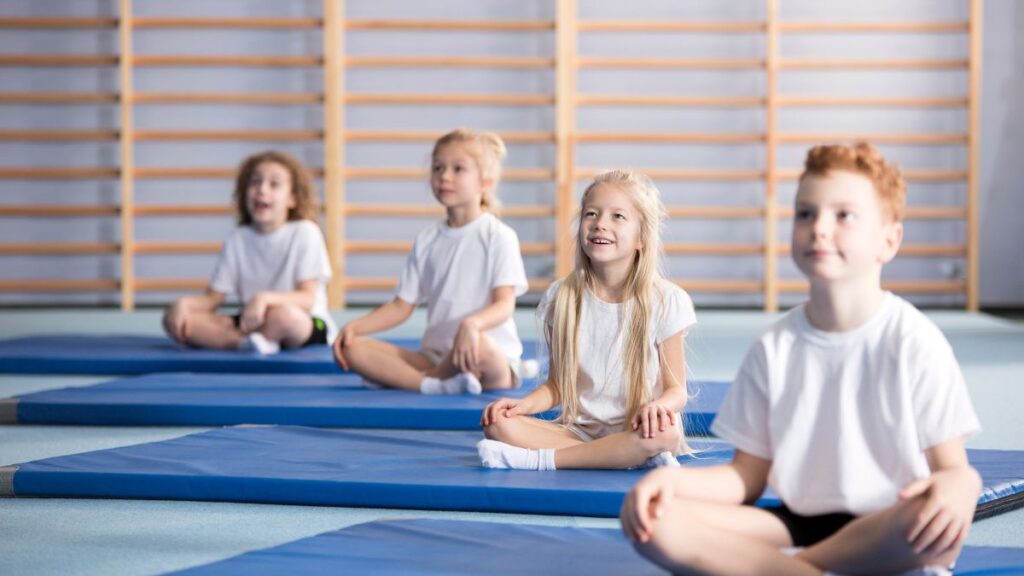In the fast-paced world we live in today, the drive to maintain physical and mental health is paramount. Physical activity, often viewed as a means to improve physical well-being, has far-reaching effects that extend to mental and emotional health as well. One of the most profound impacts of physical activity is its influence on motivation. Understanding the connection between physical activity and motivation can unlock the door to improved well-being, productivity, and a better quality of life.
The Science Behind Physical Activity and Motivation
Physical activity is widely known for its benefits, such as weight management, cardiovascular health, and improved muscle tone. However, beyond these visible benefits, physical activity has a substantial effect on the brain. Engaging in regular exercise stimulates the release of various neurotransmitters, including endorphins, dopamine, and serotonin. These chemicals are often referred to as the “feel-good” hormones because they play a critical role in mood regulation and overall mental well-being.
Dopamine, in particular, is closely linked to motivation. It is the neurotransmitter responsible for the reward and pleasure centers in the brain. When you engage in physical activity, your brain releases dopamine, which enhances feelings of pleasure and satisfaction. This release of dopamine creates a positive feedback loop, where the pleasure derived from exercise motivates individuals to continue engaging in physical activity.
Furthermore, regular exercise has been shown to increase the production of brain-derived neurotrophic factor (BDNF), a protein that supports the survival and growth of neurons. BDNF plays a significant role in learning, memory, and cognitive function. By enhancing cognitive function, physical activity indirectly boosts motivation by improving focus, decision-making, and the ability to set and achieve goals.
The Psychological Impact of Physical Activity on Motivation
The psychological benefits of physical activity extend far beyond the biochemical processes in the brain. Engaging in regular exercise can significantly enhance self-esteem and self-efficacy, both of which are crucial components of motivation. Self-esteem refers to an individual’s overall sense of self-worth, while self-efficacy is the belief in one’s ability to succeed in specific situations or accomplish tasks.
When individuals engage in physical activity, they often experience a sense of accomplishment. Whether it’s running an extra mile, lifting heavier weights, or mastering a new yoga pose, these achievements contribute to a positive self-image. Over time, as these small victories accumulate, they bolster self-esteem and reinforce the belief that one is capable of overcoming challenges. This increased self-efficacy translates into greater motivation to tackle not only physical challenges but also challenges in other areas of life, such as work, relationships, and personal development.
Moreover, physical activity can serve as a powerful stress reliever. Stress is one of the most significant barriers to motivation, as it can lead to feelings of overwhelm, anxiety, and burnout. Exercise, particularly aerobic exercise, has been shown to reduce levels of the stress hormone cortisol. By lowering cortisol levels, physical activity helps individuals manage stress more effectively, which in turn preserves motivation and energy levels for other pursuits.
The Role of Goal Setting in Enhancing Motivation Through Physical Activity
Goal setting is a fundamental aspect of motivation, and physical activity provides a unique platform for setting and achieving goals. Whether it’s training for a marathon, aiming to lose a certain amount of weight, or simply committing to a daily walk, physical activity allows individuals to set specific, measurable, and achievable goals. The process of working towards these goals fosters a sense of purpose and direction, which are key drivers of motivation.
The act of setting and achieving physical activity goals can also create a sense of accountability. When individuals commit to a fitness routine or a specific exercise goal, they often feel a sense of responsibility to follow through. This accountability can come from within or from external sources, such as workout partners, trainers, or fitness apps. Regardless of the source, accountability reinforces commitment and consistency, which are essential for sustaining motivation over the long term.
Furthermore, the progress made towards physical activity goals can serve as a tangible reminder of one’s capabilities. This progress, whether it’s visible in the form of improved physical fitness or measured through milestones like increased endurance or strength, reinforces the belief that effort leads to results. This belief is a critical component of intrinsic motivation, where individuals are driven by internal rewards rather than external incentives.
Social Connections and Their Impact on Motivation Through Physical Activity
Human beings are inherently social creatures, and social connections play a significant role in motivation. Physical activity, particularly when done in a group setting, can enhance motivation through social support and camaraderie. Whether it’s joining a running club, participating in group fitness classes, or playing team sports, engaging in physical activity with others can create a sense of community and belonging.
The social aspect of physical activity provides multiple layers of motivation. First, the encouragement and support from others can boost confidence and reinforce commitment to physical activity. Knowing that others are cheering you on or sharing in the same challenges can make the experience more enjoyable and less daunting. This sense of camaraderie can be particularly motivating during times when individual motivation wanes.
Second, the shared experience of physical activity can lead to the formation of new friendships and social networks. These connections can extend beyond the realm of fitness and into other areas of life, providing emotional support, advice, and encouragement. The positive social interactions that come from group physical activities can enhance overall well-being and contribute to a more motivated and engaged approach to life.
Finally, the competitive aspect of group physical activities can also serve as a motivator. Friendly competition, whether in a team sport or a group fitness challenge, can push individuals to exceed their limits and achieve new levels of performance. This competition doesn’t have to be about winning or being the best; rather, it can be about striving to improve and reach personal bests. The satisfaction of competing and achieving personal goals can significantly boost motivation and reinforce the desire to continue engaging in physical activity.
Overcoming Barriers to Physical Activity and Maintaining Motivation
While the connection between physical activity and motivation is clear, maintaining this motivation over the long term can be challenging. Life is full of obstacles, and there are times when motivation may wane due to various factors, such as time constraints, stress, or physical limitations. However, understanding these barriers and developing strategies to overcome them can help individuals stay motivated and committed to their physical activity routines.
One common barrier to physical activity is the perception of time constraints. Many individuals believe that they are too busy to incorporate regular exercise into their schedules. However, physical activity doesn’t have to be time-consuming to be effective. Short, high-intensity workouts, such as interval training, can provide significant health benefits in a fraction of the time. Additionally, finding ways to incorporate physical activity into daily routines, such as walking or cycling to work, taking the stairs, or doing home workouts, can make it easier to stay active without requiring a large time commitment.
Another barrier to physical activity is the lack of immediate results. Many individuals become discouraged when they don’t see immediate changes in their physical appearance or fitness levels. It’s important to remember that physical activity is a long-term investment in health and well-being. Progress may be slow, but consistency is key. Setting realistic goals, tracking progress, and celebrating small victories along the way can help maintain motivation and keep individuals focused on their long-term objectives.
Physical limitations, such as injuries or chronic health conditions, can also hinder motivation to engage in physical activity. In these cases, it’s important to consult with healthcare professionals to develop a safe and effective exercise plan. Modifying activities to accommodate physical limitations, such as opting for low-impact exercises or using adaptive equipment, can help individuals stay active and motivated without exacerbating existing conditions.
Finally, the mental aspect of physical activity should not be overlooked. Developing a positive mindset towards exercise is crucial for maintaining motivation. Rather than viewing physical activity as a chore or obligation, it’s important to see it as an opportunity for self-care and personal growth. Focusing on the immediate benefits, such as improved mood, increased energy, and stress relief, can make physical activity a more enjoyable and rewarding experience.
Conclusion: Harnessing the Power of Physical Activity for Lifelong Motivation
The connection between physical activity and motivation is a powerful one, with far-reaching implications for overall health and well-being. By understanding the science behind this connection, individuals can harness the benefits of physical activity to enhance motivation in all areas of life. From the release of dopamine and other neurotransmitters to the psychological boost of achieving fitness goals, physical activity has the potential to transform not only the body but also the mind.
To maintain motivation over the long term, it’s important to set realistic goals, seek social support, and develop strategies to overcome barriers. Whether through individual effort or group activities, physical activity can provide a sense of purpose, direction, and fulfillment that extends beyond the gym or the track. By embracing physical activity as a lifelong habit, individuals can cultivate a motivated and resilient mindset that empowers them to achieve their goals and live a healthier, more fulfilling life.






